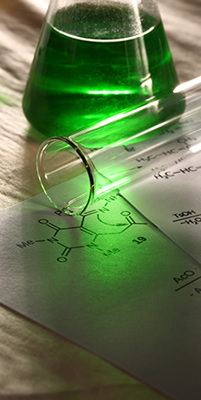Green Chemistry Practices: Voluntary or Regulatory?
November 8, 2013
 |
As we saw last time, green chemistry advocates in this country and the European Union support voluntary standards with enthusiasm. But many U.S. practitioners prefer standards with more muscle, something that only regulation can provide. For better or worse, in the United States, it’s lean pickings in the green chemistry regulations department. Only one state has established a legislative framework. The rest of the action comes from Europe.
State and national regulations
In the United States, the centers of green chemistry action—or lack of it—lie in California and the halls of our national government.
| U.S. Patent Office | |
| It’s a disheartening but accurate indicator of green chemistry “progress”: Less than 1 percent of recently issued patents apply to green chemistry products or products. Enough said (for now). | |
| California Safer Consumer Products Regulations | |
| After several proposals and nearly 5 years of public consultation and politicking, California passed its redesigned green chemistry regulations in August 2013. This program requires manufacturers to eliminate 1,200 chemicals of concern from a wide array of consumer products. However, in the absence of federal chemical regulatory reform, green chemistry requirements are only expected to proliferate across jurisdictions over time. There is little likelihood that the different mandates will be integrated harmoniously. |
International regulations (REACH)
Overseas, especially in the European Union, green chemistry gets much more regulatory and public attention. Here are two notable examples:
| Registration, Evaluation, Authorization and Restriction of Chemical Substances | |
| Registration, Evaluation, Authorization and Restriction of Chemical Substances. Established in 2006, Europe’s REACH regulations are the farthest reaching (some might say over-reaching) green chemistry policies to date. REACH is in part an attempt to give Europe a competitive advantage in the global shift toward sustainability. Its policies mandate that chemicals manufacturers supply consumers with a vast increase in the amount and availability of chemicals-related information. In an interview James Solyst, a principal consultant with ENVIRON International Corporation, commented, “There was not sufficiently detailed information to make the public confident of the origin and composition of many chemicals used in daily life. REACH provides that level of information—but also creates a huge task in managing it.” | |
| European Food Safety Authority | |
| On 17 October 2013, the EFSA Panel on Food Contact Materials, Enzymes, Flavorings and Processing Aids released draft revisions to its guidelines for food contact materials. These new policies include new data requirements, which could lead to substance re-evaluations. The guidelines specify the data that must be submitted with applications for safety assessments of substances used in FCMs before they are authorized by the European Commission. So, what do we have? A very mixed bag of approaches and likely outcomes. Stay tuned for updates. Next Time: A more complete picture of current practice requires a review of forward-looking companies that use green chemistry principles. |
Next time, we review companies who leaven their good intentions with real-life business results.
The future can be cleaner.
At GlyEco, we believe providing information about chemistry-based pollution solutions is good for both the environment and your mind. Our team is dedicated to creating a future with less dirty glycol going to waste. It's a big job... and we are up to the challenge. Using our breakthrough technology, we clean all types of waste glycol, help safeguard the environment and create valuable green products.








